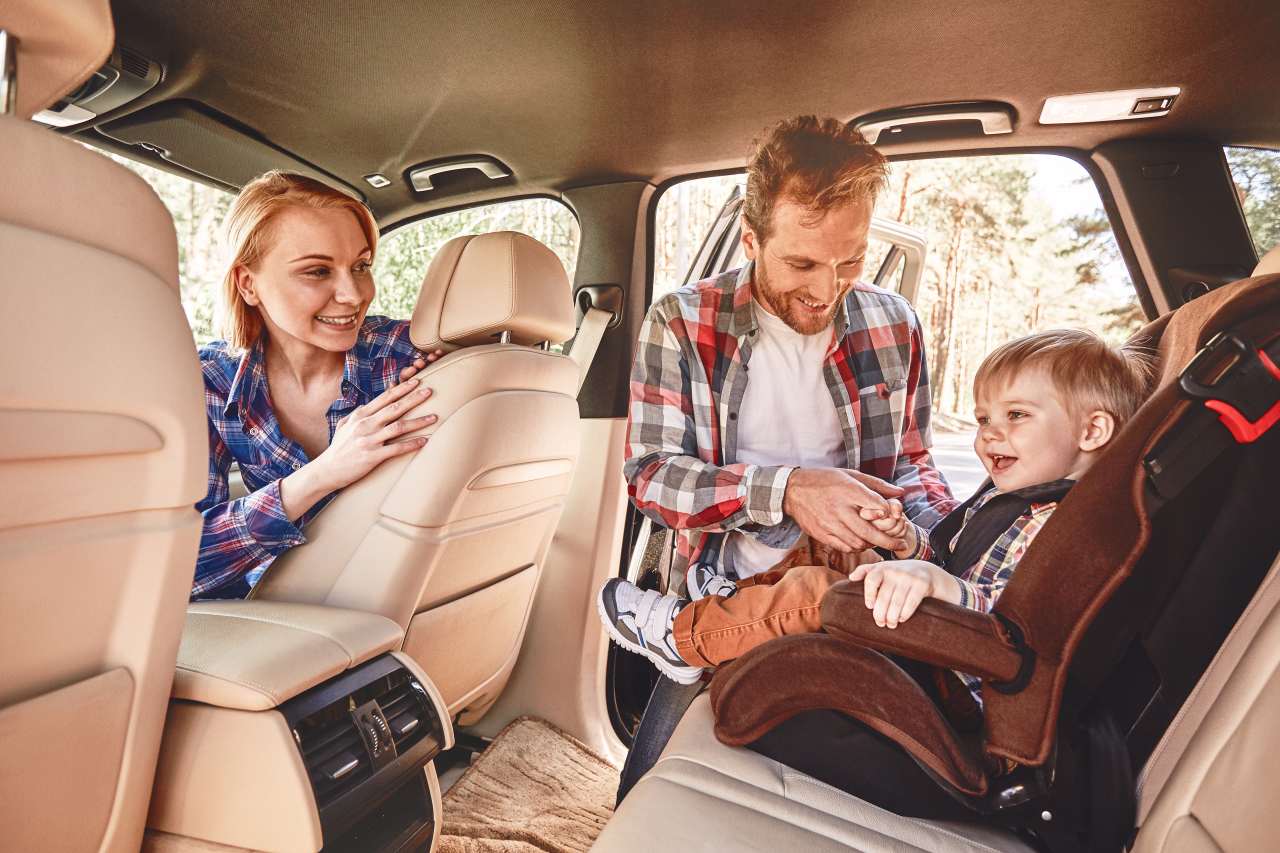Where were you in the year 2000? Cowering in a dark corner, hoping the Y2K bug wouldn’t wipe out civilisation as we knew it? Or, confidently on the front foot, shopping for a new car to transport you and your family safely into the next millennium?
If it was the latter, the most popular options back then were hatchbacks, sedans and wagons. The Ford Falcon, Holden Commodore, Mitsubishi Magna and Toyota Camry were at the height of their powers and the term ‘SUV’ was largely confined to North America, describing off-road outliers like Jeeps and Range Rovers.
Brands from Mazda to Mercedes-Benz, Peugeot, Volvo and heaps of others all offered family-friendly wagons alongside their sedan counterparts.
Fast forward a quarter of a century and we’re in a world of SUVs and utes, with the traditional ‘station wagon’ almost consigned to history. But Skoda is keeping the wagon dream alive with its mid-size Octavia sedan (liftback) and wagon.
And the subject of this review is the just-arrived, 2025 model year iteration of the flagship Octavia RS, designed to combine functional pragmatism with smile-inducing performance. Let’s check it out.
Skoda Octavia 2025: RS 195TSI
| Engine Type | Turbo 4, 2.0L |
|---|---|
| Fuel Type | |
| Fuel Efficiency | 7.0L/100km (combined) |
| Seating | 5 |
| Price From | $57,490 |
| Safety Rating |
|
Price and features – Does it represent good value for the price? What features does it come with? 9/10
9 / 10
Priced at $58,490 for the sedan and $59,990 for the wagon, both before on-road costs, the Octavia RS has one competitor that meets the mid-size sedan and wagon criteria with cost-of-entry somewhere in the same ballpark. And that’s the current Mazda6 20th Anniversary Edition.
Pitched at $54,385, before on-road costs, for the sedan and $55,685 (BOC) for the wagon, the Mazda goes toe-to-toe with the Skoda on size, equipment and performance, although the ‘6’ leans more towards a premium rather than outright performance vibe. And the Mazda has recenetly been discontinued in Australia.

The Accord VTi-LX Hybrid ($59,900, drive-away) puts Honda in the sedan mix and if you’re considering a pure electric medium sedan, the BYD Seal Premium comes in at $58,798, before on-roads while the Tesla Model 3 Single Motor RWD sits at $54,900.
So, aside from the safety and performance tech, covered a little later, what can you bank on in terms of included features for a price tag giving $60K a serious nudge?

The answer is… heaps. Standard equipment on the Octavia RS includes three-zone climate control, adaptive cruise control, a 13-inch multimedia touchscreen, sat nav, 12-speaker Canton audio (with digital radio), a 10-inch configurable digital instrument display, a head-up display, sports front seats (heated with six-way power adjust, memory and massage function), heated rear (outboard) seats, a power tailgate (with hands-free opening), keyless entry and start and rain-sensing wipers.

There’s also ‘Intelligent Park Assist’, LED external lighting (including matrix LED headlights), 19-inch alloy rims, heated and power-folding exterior mirrors (with memory function), synthetic leather and synthetic suede trim, a flat-bottom leather-trimmed steering wheel, alloy finish pedals and rear privacy glass as well as wireless Android Auto and Apple CarPlay.

Worth noting solid, metallic and pearlescent paint options (seven colours) are included as standard, with the single premium metallic ‘Velvet Red’ colour adding $770.
That’s as much fruit as you should expect in this part of the market and a bit more.
Design – Is there anything interesting about its design? 8/10
8 / 10
The current Octavia complies with Skoda’s sharp and angular approach to exterior design, with cool, jagged LED headlight clusters sitting either side of a blacked-out octagonal grille.
A brand signature is the bonnet shutting low and flush over the front guards to create a broad hood panel with longitudinal character lines running down its length. Similar creases flow confidently along the car’s flanks with 19-inch alloys filling the wheel wells nicely.
A smoothly tapering turret ends with a steeply raked rear screen on the sedan and wagon with angular LED tail-lights following a similar pattern to the headlights.

As well as the black grille, car-spotters should look out for the RS’s black finish on the window frame surrounds, roof rails (wagon only) wing mirrors and tailpipes as well as red brake calipers and RS sports bumpers front and rear.
Always a subjective call, but I for one think this car looks distinctive and contemporary while avoiding unnecessary flashiness.
Inside, the treatment is relatively reserved, with a grey through to black colour palette and high-quality materials, including soft-touch surfaces around the dash, doors and console, as well as ‘mouse fur’ and faux carbon sections on the upper dash.

The sports front seats are trimmed in a combination of synthetic leather and synthetic suede with quilted panels in the centre of the cushion and backrest. They feel as good as they look and are easy to get in and out of. Red contrast stitching throughout the interior dials up the racy tone.
A sizeable central media touchscreen sits proud of the dash with the VW Group’s ‘Virtual Cockpit’ ahead of the driver configurable through multiple set-ups. And a smattering of dark chrome and brushed metal highlights (including on the pedals) finish off a beautifully executed interior.
Practicality – How practical is its space and tech inside? 9/10
9 / 10
Practicality is an area where Skoda comes into its own. At every turn the brand’s design and engineering teams have obviously kept day-to-day usability in mind with thoughtful tweaks to make life easier.
Some have become low-key famous like an umbrella slotted into the driver’s door (Rolls-Royce-style) and a small lidded rubbish bin in the driver’s door pocket.
But over and above that, the Octavia’s efficient packaging means in a car measuring just on 4.7m long there’s heaps of room up front for the driver and passenger, with lots of handy storage options.
Aside from generous door pockets there’s a box between the seats with a padded lid (adjustable for height and length when in use as an armrest), a 15W wireless charging pad (with ventilation from below to keep devices cool), a big glove box (with pen holder), multiple cupholders, a cupholder insert able to hold a phone and/or some coins, numerous oddments trays and a sunglasses compartment overhead (not fitted with optional panoramic sunroof).
And in the back, sitting behind the driver’s seat, set for my 183cm height, there’s tons of leg and headroom with more practical design thinking on display.
For example, map pockets on the back of the front seats have a phone-sized slot stitched into them. There are pull up shades for each window, big bins in the doors with plenty of room for bottles and more, a pull-down centre armrest with fold-out cupholders (plus some oddments space), adjustable climate control vents plus a box on the floor for extra bottles and ‘stuff’ (removable if you need foot room for a centre passenger).
Power and connectivity runs to five USB-C sockets (two front, two rear and one near the rear-view mirror for dashcam duty) plus a 12-volt outlet in the boot.
Speaking of which, head to the boot and the ‘plenty of room’ theme continues. With the 60/40 split folding rear seat upright there’s 600 litres of space in the sedan and 640 litres in the wagon. Lower the backrest and that number increases to 1555 and 1700 litres, respectively. That’s plenty, and more than the Mazda6.
The sedan and wagon feature anchor points for securing loose loads, extra storage bays behind the rear wheel wells, there’s a ski-port door behind the rear armrest, load divider rails in the sedan, remote release handles for the rear seat, bag hooks, a luggage net… the lot.
The powered tailgate includes hands-free opening, there’s a space-saver spare under the floor and towing capacity for a braked trailer is 1600kg (750kg unbraked).
Under the bonnet – What are the key stats for its engine and transmission? 8/10
8 / 10
The Octavia RS is designated ‘195TSI’ which relates to the power output of its 2.0-litre, four-cylinder, turbo-petrol engine driving the front wheels through a seven-speed dual-clutch auto transmission.

It’s a fourth-generation evolution of the Volkswagen Group’s long-serving ‘EA888’ engine series, an iron block/alloy head unit featuring direct-injection and variable valve timing to produce (you guessed it) 195kW and 370Nm.
Efficiency – What is its fuel consumption? What is its driving range 7/10
7 / 10
The Octavia RS’s official fuel consumption figure on the combined (urban/extra-urban) cycle is 7.0L/100km, the 2.0-litre turbo-petrol engine emitting 159g/km of CO2 in the process (wagon 160g/km).
A start/stop function is standard and on a launch drive program through rural Victoria, covering several hundred kilometres’ worth of urban, B-road and freeway running we saw a (dash-indicated) figure of 6.9L/100km. With a 50-litre fuel tank on board, the RS’s theoretical range is around 715km.
In the city, expect an average in the high 8.0 range, which isn’t out of order for a 1.5-tonne sedan (1.6-tonne wagon).
Driving – What's it like to drive? 8/10
8 / 10
Skoda claims 0-100km/h acceleration in 6.4 seconds for the Octavia RS sedan and 6.5sec for the wagon and it feels willing with solid mid-range punch available.
Peak power comes on stream up high (5250-6500rpm) but maximum pulling power is on tap from 1600-4500rpm, which is spot-on for urban running, easy highway cruising and safe overtaking.
A sports exhaust dials up a rorty note when pushing on and the seven-speed dual-clutch transmission proved quick and smooth on a launch drive covering mainly rural B-roads and some freeway sections.

Steering wheel-mounted paddles add extra involvement when you’re in the mood to push through some twisty stuff and select ratios manually.
Speaking of corners, suspension is by struts at the front and a multi-link arrangement (unique to the RS grade) at the rear, with an electronically controlled limited slip differential and ‘Dynamic Chassis Control’ standard. Ride height is 15mm lower than the standard Octavia.
DCC is Skoda code for an adaptive damper set-up and the system offers a ‘Comfort’ mode to help manage bumps, although it adds an air of floatiness on the open road. As the name implies, ‘Sport’ buttons everything down and road imperfections immediately make their presence felt. ‘Normal’ is surprisingly comfortable without upsetting the car’s balance and overall compliance.

Standard rubber is 225/40 Bridgestone Potenza S005, providing a good grip vs comfort compromise, and the electrically assisted progressive rate rack and pinion steering is accurate, providing good road feel without being too sharp or ‘pointy’. Braking is by ventilated discs all around and the pedal is strong and progressive.
Under the heading of miscellaneous observations, engine, wind and road noise are modest, the grippy sports front seats remained comfortable over several hours behind the wheel, plus a relatively tight 10.4m turning circle and standard 360-degree camera view system make parking easy.
Warranty & Safety Rating
Safety – What safety equipment is fitted? What is its safety rating 9/10
9 / 10
The current Skoda Octavia was given a maximum five-star ANCAP rating following assessment in 2022. High scores in the adult and child occupant protection categories focused on the stability of the car’s passenger compartment in front offset, full front, side and pole impact crash tests.
For the 2025 model year, standard active (crash-avoidance) tech now includes turn assist and advanced driver fatigue detection, which is on top of auto emergency braking (AEB) operating from 5.0-250km/h (with car and ‘vulnerable road user’ detection plus junction assist), lane keeping assist (and emergency lane keeping), rear AEB, blind-spot monitoring, rear cross-traffic alert, a reversing camera, a 360-degree camera view, tyre pressure monitoring, front and rear parking sensors and more.
If, despite all that, a crash is unavoidable the airbag count runs to 10 - dual front, front side, rear side, side curtain, front centre and driver's knee.
There are three top tether points for securing child seats across the second row with ISOFIX anchors on the two outer rear positions.
That’s an impressive safety run down, as good or better than any category competitor.
Ownership – What warranty is offered? What are its service intervals? What are its running costs? 8/10
8 / 10
The Octavia is covered by Skoda’s seven-year/unlimited kilometre warranty, which is ahead of the mainstream five-year warranty pack, although a little short of some, like MG and Mitsubishi at 10 years.
Service is recommended every 12 months/15,000km and a four-year/60,000km service pack will set you back $2000, with 12 months’ roadside assistance topped up for another year after each trip to an authorised workshop.
That $500 per service charge is a solid amount but not outrageous for a premium, especially Euro, mid-sizer. For reference the Mazda6 20th Anniversary averages $552 per service over the same period.
Verdict
While other brands may have a higher profile, the quality of this Octavia RS proves Skoda deserves a greater share of the limelight. If you’re thinking about a primo mid-size sedan, or wagon, or even a medium SUV, this car combines satisfying performance with low-to-the-ground dynamics, immense practicality, top-shelf safety and solid value-for-money. It’s nicely put together using quality materials and the ownership package is class competitive. Do yourself a favour and add it to your new-car shopping list.
Note: CarsGuide attended this event as a guest of the manufacturer, with travel, accommodation and meals provided.
Pricing Guides

















































.png)
.jpg)
.jpg)

.jpg)

